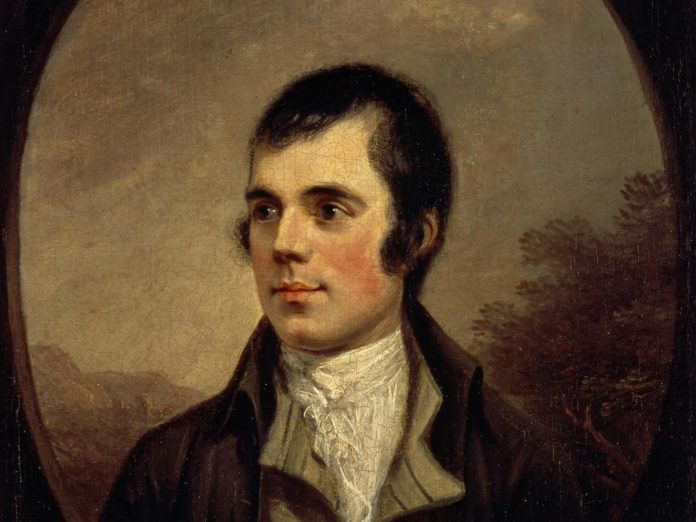
Even centuries after his death, the songs and poems penned by Robert “Robbie” Burns continue to be relevant and recited today. That’s why on Thursday (January 25), people around the world will be joining together in song, dance, whisky, and, of course, lots of haggis in honour of the 265th birthday of Scotland’s national bard.
But who is he, and why did his work inspire several of the famed writers who followed in his path, including William Woodsworth and Samuel Taylor Coleridge?
The eldest of seven children, Burns (commonly called “Rabbie” in Scotland) was born in Alloway on the Ayrshire Coast of Scotland. The house he grew up in, which his father built, still stands today as a museum dedicated to the poet’s life and work. Though he came from a poor family, Burns was well-educated and showed promise as a writer from a very young age.
Beginning to write seriously after his father’s death in 1784, Burns published his first collection of poetry, Poems, Chiefly in the Scottish Dialect (commonly known as “The Kilmarnock Edition”), at 27 years of age. The collection featured some works that had gained popularity through circulation in the region, and others that have become some of his most well-known works to date, including “To a Mouse,” “To a Mountain Daisy,” and “Address to the Deil.”
Moving to Edinburgh, Burns published another edition of the collection, with added poems, and wrote more than 200 Scottish folk songs. Like today’s expressions of art, his work often focused on themes of injustice, inequality, and the hardships of the working class, with radically political commentary.
Other well-known songs and poems from Burns includes “A Red, Red Rose”, “My Heart’s in the Highlands”, “The Battle of Sherramuir”, “Ae Fond Kiss”, and “Auld Lang Syne” which continues to be sung around the world to ring in the new year.
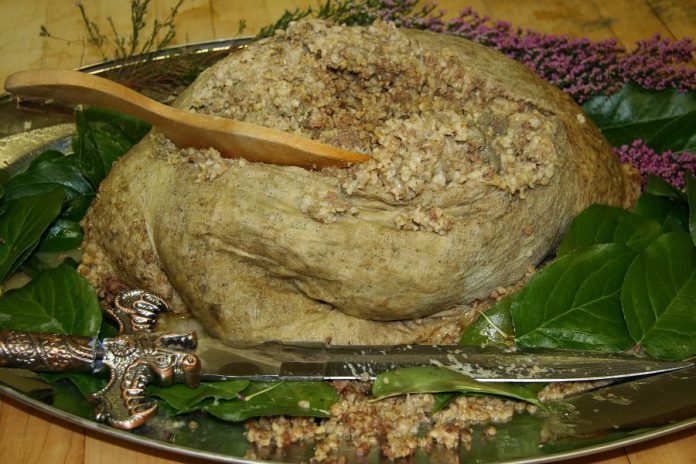
After his death in 1796 at the age of 37 (attributed to a longstanding heart condition combined with a bacterial infection, possibly from a tooth abscess), Burns’ political writing and views became a great source of inspiration to the founders of liberalism and socialism.
To pay tribute to the poet, Burns Suppers hosted on his birthday has become a tradition not just in Scotland but around the world, dating back to 1801 when several of his friends hosted the very first. In the most formal of gatherings, bagpipes are typically played while the meal’s centrepiece, the haggis, is brought in. A toast is then given to the meal, with the recital of Burns’ “Address to a Haggis” while slicing into the dish during the line “An’ cut you up wi’ ready slight.” Mashed potatoes and turnips are customarily served alongside the haggis.
There is often a teasing toast to the “lassies” and the opportunity for said lassies to respond with a toast to the lads, before the meal is bookended with a group chorus of “Auld Lang Syne.”
While other renditions of the evening have come to include traditional Scottish dancing, flights of whisky, or variations of the meal served, the main purpose of the night is to gather in celebration and have a grand ol’ time.
Communities in the Kawarthas wouldn’t dare miss joining in the fun, so there is much whisky and haggis to be had this week.
At 452 George Street North in downtown Peterborough, the Black Horse Pub’s heart will be in the Highlands on Robbie Burns Day from 5 to 7 p.m. Washboard Hank takes to the stage at 5 p.m, with Rose Petal piping in the haggis at 6 p.m. before a reciting of Burns’ “Address to the Haggis” at 6:30 p.m. Following the event, the weekly jazz and blues night begins at 7 p.m. More information can be found on Facebook.
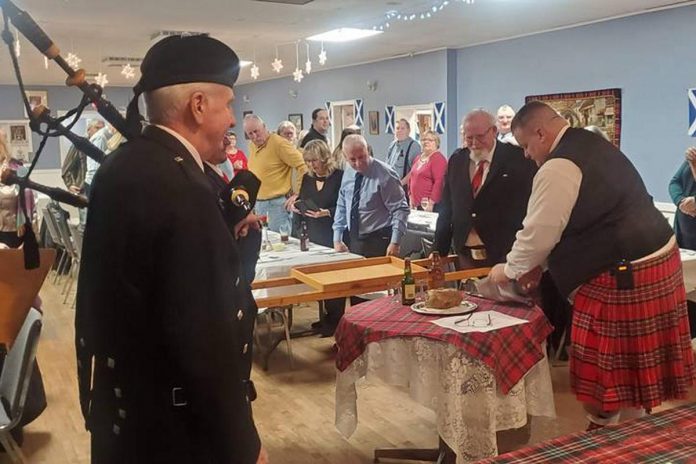
Visit the Victorian-inspired Arthur’s Pub at 390 Burnham Street in Cobourg on Robbie Burns Day for a taste of Scotland. Shepherd’s pie, haggis, and soda bread will be served for $21.95. Pair it with a flight of Scotch whisky if you’re feeling extra Scottish. Call 905-372-9940 for reservations.
Head to downtown Port Hope’s The Thirsty Goose at 63 Walton Street at 6 p.m. on Robbie Burns Day for an evening of poetry, traditional food, and celebration. The $40 ticket gets you a four-course meal, served after the piping in and ode to the haggis. Scotch flights will also be available for purchase through the evening. Call 905-800-0338 to make a reservation.
On Saturday (January 27), visit the Grafton Legion at 10240 Highway 2 between Cobourg and Grafton for a Robbie Burns Dinner featuring music by the Cobourg Legion Pipes and Drums, Scottish country dancing led by Diane Coulombe, and songs from Chris Devlin, who is the emcee for the evening. Happy hour begins at 5 p.m. followed by with a roast beef and haggis dinner served at 6 p.m. Tickets must be purchased in advance at a cost of $40 per adult and $20 for children 10 and under. Tickets are available at Nessie’s British Shop at 16 King Street East in Cobourg (905-372-7158) or from members of the Cobourg Legion Pipes and Drums.
12 things you may not know about Robbie Burns
1. He produced a lot more than poetry.
By the time he died at the age of 37, Burns had sired 12 children by four different women. His oldest child Elizabeth was born after he had an affair with his mother’s servant. His youngest child Maxwell was born on the day of Burns’ funeral.
2. He’s a monumental figure.
Burns has more statues dedicated to him around the world than any other non-religious figure, other than Queen Victoria and Christopher Columbus.
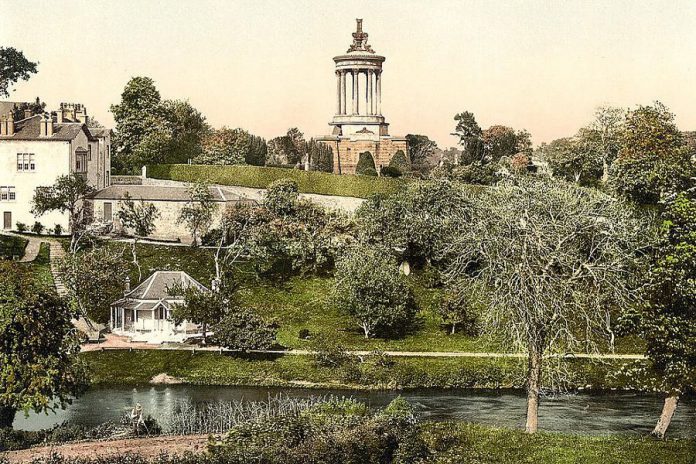
3. He almost worked on a slave plantation in Jamaica.
Burns was planning to emigrate to Jamaica to work on a slave plantation, but he changed his mind because of the successful sales of his first book of poetry.
4. He wrote the third most popular song in the world.
Burns’ iconic song “Auld Lang Syne” is one of the three most popular English language songs, after “Happy Birthday” and “For He’s a Jolly Good Fellow.”
5. He had a big head — literally.
When Burns’ body was exhumed in 1815 to be moved to a new mausoleum, a plaster cast was taken of his skull and he was found to have a larger-than-average skull. In 2013, forensic experts at the University of Dundee used the cast along with contemporary portraits to recreate an accurate 3D depiction of his head.

6. Bob Dylan is a big fan.
When asked about the source of his greatest creative inspiration, Bob Dylan said it was Burns’ 1794 song “A Red, Red Rose.”
7. Michael Jackson was a big fan.
Michael Jackson was such a fan of Burns’ poetry that he recorded a collection of show tunes with American producer David Gest based on Burn’s life and work (they were never formally released).
8. The former Soviet Union was a big fan.
The former Soviet Union commissioned a commemorative stamp of Robbie Burns in 1956 to mark the 160th anniversary of his death.
9. His work inspired the names of two literary classics.
The titles of J.D. Salinger’s The Catcher in the Rye and John Steinbeck’s Of Mice and Men come from Burn’s poems (“Comin Thro the Rye” and “The best laid schemes o’ mice an’ men / Gang aft agley” from “To a Mouse”).
10. He’s a pop icon.
In 2009, Burns was the first person ever to appear on a commemorative bottle of Coca-Cola.
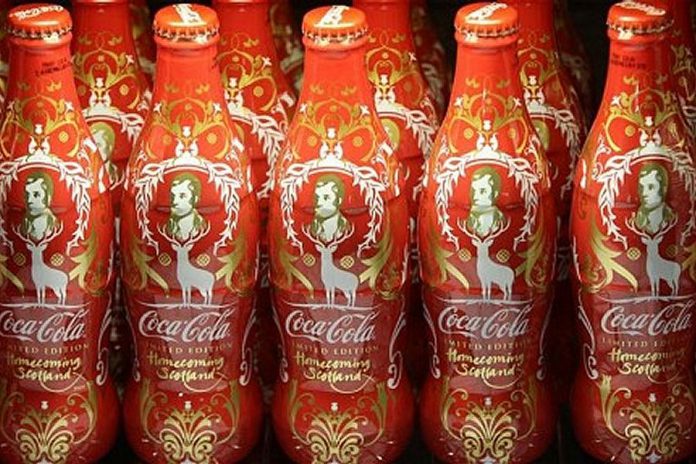
11. He’s been in space — figuratively.
In 2010, astronaut Nick Patrick took a miniature book of Robert Burns’ poetry into space for a two-week mission.
12. Your clothes may have been designed by one of his descendants.
American fashion designer Tommy Hilfiger is the great, great, great nephew of Robert Burns (Hilfiger’s aunt Rose Kirbis was the granddaughter of Burns’ brother Gilbert).
“It was never discussed in my house, because it was said that Robert Burns was a womaniser and a boozer,” Hilfiger has said.



























